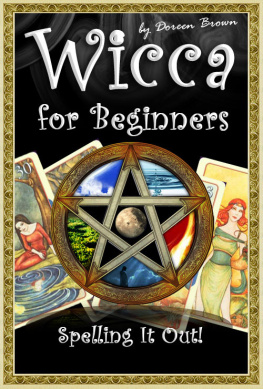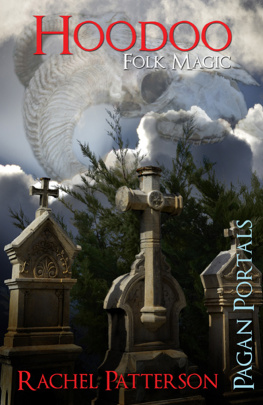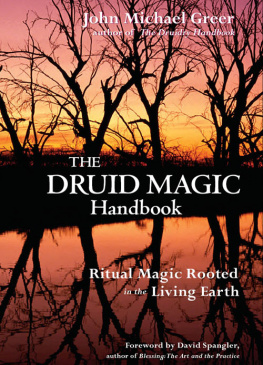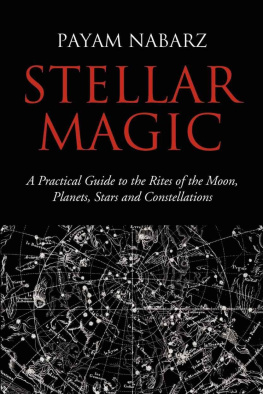Nigel Pennick - Pagan Magic of the Northern Tradition: Customs, Rites, and Ceremonies
Here you can read online Nigel Pennick - Pagan Magic of the Northern Tradition: Customs, Rites, and Ceremonies full text of the book (entire story) in english for free. Download pdf and epub, get meaning, cover and reviews about this ebook. year: 2015, publisher: Inner Traditions/Bear & Company, genre: Religion. Description of the work, (preface) as well as reviews are available. Best literature library LitArk.com created for fans of good reading and offers a wide selection of genres:
Romance novel
Science fiction
Adventure
Detective
Science
History
Home and family
Prose
Art
Politics
Computer
Non-fiction
Religion
Business
Children
Humor
Choose a favorite category and find really read worthwhile books. Enjoy immersion in the world of imagination, feel the emotions of the characters or learn something new for yourself, make an fascinating discovery.

- Book:Pagan Magic of the Northern Tradition: Customs, Rites, and Ceremonies
- Author:
- Publisher:Inner Traditions/Bear & Company
- Genre:
- Year:2015
- Rating:3 / 5
- Favourites:Add to favourites
- Your mark:
- 60
- 1
- 2
- 3
- 4
- 5
Pagan Magic of the Northern Tradition: Customs, Rites, and Ceremonies: summary, description and annotation
We offer to read an annotation, description, summary or preface (depends on what the author of the book "Pagan Magic of the Northern Tradition: Customs, Rites, and Ceremonies" wrote himself). If you haven't found the necessary information about the book — write in the comments, we will try to find it.
Pagan Magic of the Northern Tradition: Customs, Rites, and Ceremonies — read online for free the complete book (whole text) full work
Below is the text of the book, divided by pages. System saving the place of the last page read, allows you to conveniently read the book "Pagan Magic of the Northern Tradition: Customs, Rites, and Ceremonies" online for free, without having to search again every time where you left off. Put a bookmark, and you can go to the page where you finished reading at any time.
Font size:
Interval:
Bookmark:

PAGAN MAGIC of the NORTHERN TRADITION

Nigel Pennicks Pagan Magic of the Northern Tradition is a treasure trove of ancient folklore of magical rituals and charms for the protection of people and homes, of barns and livestock, of temples and churches, for good luck and healing as well as causing harm when the rituals are not followed. It describes daily ritual activities of the people of these Pagan times and how they experienced the dangers and evil spirits of the world they lived in. Some of the magical rituals were quite bizarre while others may be of value for living in todays world. Pennick compares the customs and rituals of a wide range of cultures across Europe and beyond, as well as across time, tracing their origins, similarities, and differences. The book is well researched, well organized, and a valuable and impressive resource for understanding the spiritual journeying of our ancestors.
NICHOLAS E. BRINK, PH.D., AUTHOR OF BALDRS MAGIC:
THE POWER OF NORSE SHAMANISM AND ECSTATIC TRANCE
AND BEOWULFS ECSTATIC TRANCE MAGIC
Whether we call it magic or folklore (or even superstition), the traditional, often pre-Christian knowledge described in Pagan Magic of the Northern Tradition is fascinating. Ive been referring to Pennicks books for years when I need a fact or an example of some interesting early magic to cite in my books and blogs. I learned something new on every page!
BARBARA ARDINGER, PH.D., AUTHOR OF
PAGAN EVERY DAY AND SECRET LIVES
Magic was a part of everyday life for our Pagan ancestors, a spiritual approach to the environment used by everyone and embedded in all the practical skills of living, from farming and building to music and healing. Nigel Pennick shows us that it is a tradition that still flourishes and rewards us in the modern world.
ANNA FRANKLIN, AUTHOR OF
THE SACRED CIRCLE TAROT,
PAGAN RITUAL, AND HEARTH WITCH
Nigel Pennicks book offers a well-documented overview of everyday magic, the last recourse against all evils. It introduces us to a strange Pagan world haunted by spirits and supernatural owners of nature and rehabilitates the studies of magic as an important part of our common cultural heritage. Pennicks book is well worth a read!
CLAUDE LECOUTEUX, PROFESSOR EMERITUS
AT THE SORBONNE AND AUTHOR OF
THE TRADITION OF HOUSEHOLD SPIRITS
AND DEMONS AND SPIRITS OF THE LAND
Preamble

Magic is an integral part of culture. It has often been ignored by historians, who, not believing in its efficacy or even recognizing that in the past many people did believe, thereby have dismissed any belief in it as beneath mention. Alternatively, when they have mentioned magic and the occult sciences, they have been portrayed as worthless superstition, or irredeemably diabolical and evil, unspeakable rites to be shunned because they might taint the reader. But to present magic as a dangerous subject that ought to be censored lest it seduce the reader into criminality is unhelpful, for it pushes students of magical history into a ghetto when students of human depravity and violence, such as crime and war, are welcome in the mainstream. Magic played a significant part in shaping peoples lives. Magic is an integral part of our cultural heritage, ancient skills, and wisdom that are a perennial response to universal situations and problems. Unraveling the history of an undocumented tradition in a definitive way is impossible. The only way to understand the themes embedded in the fragments is to take notice of historic parallels and examples, and draw conclusions from them.
Introduction
Northern Magic
MAGIC AND RELIGION
The traditional worldview is practical, consisting of what works or what is perceived to work. Ancient Pagan religions in Europe were concerned with rites and ceremonies; there was neither creed nor essential doctrines. All members of the family, clan, tribe, or nation participated in ritual activities, but belief was not demanded of the participants. There was no orthodoxy, and no heresy; participation was all that was required. In premodern times, life was unimaginably hard by the twenty-first-century standards of developed countries. People were reliant on agriculture, herds and flocks, hunting and fishing. There were no effective remedies for disorders, diseases, or epidemics of humans or livestock. Crop failures brought frequent famine; peasants often lived in grinding poverty at the edge of starvation. If a hurricane or flood occurred, there was no backup to rescue survivors, who had to get by as well as they could, having lost everything. Traveling was difficult, and wayfarers and voyagers ran the risk of attack by wild animals, robber barons, bandits, outlaws, or pirates, or dying crossing rivers and or in storms at sea. At home, there was always the risk of attack by marauding bands of fighting men, bringing rape, torture, death, or enslavement to those who could not resist or flee. Numberless diseases, disorders, and ailments beset the people, and their only recourse for a remedy was to practitioners of traditional medicine. Magic was an indivisible part of the craft of wise men and women as well as professional doctors. In such a fragile environment, people needed wisdom and skill to survive and flourish.
Magic practiced by the common people in pre-Christian times was part of everyday culture. It was embedded in the practical skills of everyday living. As in all parts of traditional society, there were specialists. Those in the handicrafts included smiths, wrights, carpenters, shoemakers, and other skilled workers who made things necessary for living, and there were also practitioners of herbalism, medicine, and divination whose arts were heavily on the magical side. But all of these arts and crafts had no theory; functionality was the operative criterion. They may have had origin-stories and mythical founders, but theory is something different, the arcane pursuit of philosophers and theologians. The Christian church, unlike traditional Pagan observance, insisted on belief in stories and doctrines that it asserted were essential to the afterlife. Belief in doctrines became confused with the practice of ethics. It was asserted that one could not be an ethical person unless one believed everything the church demanded. The northern Pagan point of view, however, is expressed in the Old Norse poem Hvaml (The Words of the High One), attributed to Odin. Hvaml describes desirable and undesirable behavior in terms of mannvit (common sense) and vtr (foolishness). Behavior is defined as either skilled or unskilled behavior, and the outcome of unskilled activities is social: loss of face, ridicule, and outlawry. The concept of eternal damnation is not part of this way of understanding. Ones personal belief or disbelief does not matter, so long as one is a good citizen.

Fig. 1.1. Celtic stone image, Echterdingen, Germany.
A SHORT HISTORY OF NORTHERN PAGANISM
The history of indigenous religion in northern Europe provides some explanation of the context of traditional magic over the last sixteen hundred years. From what we can determine of ancient northern European religion, there was no distinct barrier between gods and lesser spiritual beings. The early religion of the northern peoples appears to have been centered not on an abstract universal deity, but upon the veneration of a divine ancestor and the natural forces of the world. The kings ancestor was also the tribal god, and this principle was maintained among the Angles and Saxons in England. Seven out of the eight Anglo-Saxon royal genealogies descended from Woden, as did the royal line of Sweden. Ancestral holy places including homesteads, grave mounds, and battlefields were venerated as places where the ancestral spirits remained. Folk-Moots, the forerunner of parliaments, were held on moot-hills, some of which were the burial mounds of ancestors, whose spirits were invoked in collective decision making. The ancestors also played an important role in the everyday worship of the common people. There were goddesses similar to the Norse
Next pageFont size:
Interval:
Bookmark:
Similar books «Pagan Magic of the Northern Tradition: Customs, Rites, and Ceremonies»
Look at similar books to Pagan Magic of the Northern Tradition: Customs, Rites, and Ceremonies. We have selected literature similar in name and meaning in the hope of providing readers with more options to find new, interesting, not yet read works.
Discussion, reviews of the book Pagan Magic of the Northern Tradition: Customs, Rites, and Ceremonies and just readers' own opinions. Leave your comments, write what you think about the work, its meaning or the main characters. Specify what exactly you liked and what you didn't like, and why you think so.





